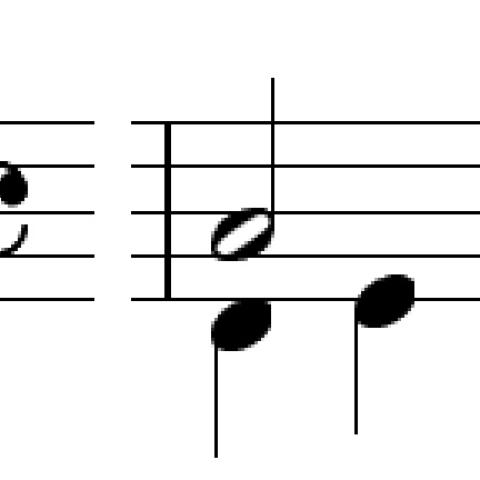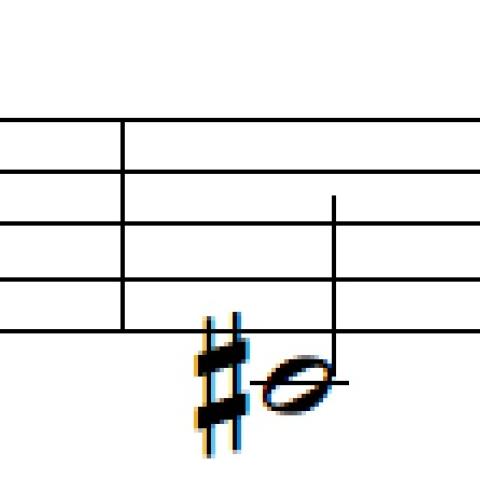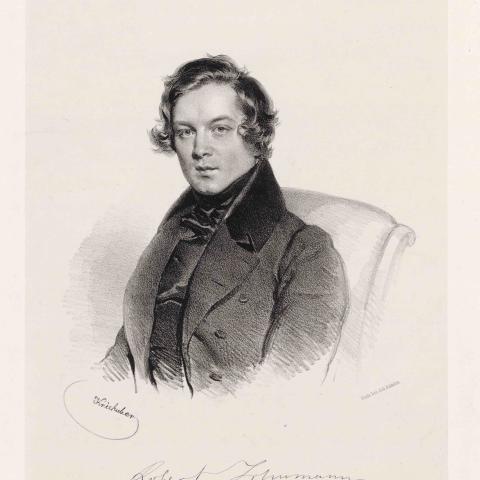
The Art of the Fugue, II
For discussion in this the next two columns, I offer the program notes I wrote for my first performance of The Art of the Fugue in May 1985. This performance, on the Fisk organ at Westminster Choir College, was one of my two graduate recitals. I prepared these notes over more or less an entire semester and had some input and help from my teacher Eugene Roan and from William Hays, who was the advisor for degree recital program notes. I have been pleased with this essay, and I have used it as partial program notes for subsequent performances. It has an integrity to its overall structure—thanks in significant part to Dr. Hays’s assistance—such that I have not changed it or excerpted it. Despite that, if I were to write these notes today, there are a number of things I would phrase differently.
It could be fruitful to use some of those theoretical revisions to frame future columns about the learning process, the evolution of my relationship with this work, and the relationship between my own work on this piece and teaching. Some of what I wrote about the order of the movements was too cut-and-dried, rather too simple, failing to reflect some of the complexities of what we do and do not know about the piece. In later columns, I will discuss that, including some new ideas.
History and form
J. S. Bach wrote The Art of the Fugue during the last years of his life, probably beginning work on what turned out to be his longest and most complex instrumental composition in 1743, leaving the opus incomplete at his death in July 1750. It was published in 1751 in Leipzig in a poorly engraved edition, the preparation of only part of which had been supervised by Bach himself. The publication was not a commercial success, and the project was soon abandoned by Bach’s heirs.
Copies of The Art of the Fugue circulated among musicians, however, from that time on. In 1799 a scholar referred in print to the work as “celebrated,” and both Mozart and Beethoven owned copies. The Art of the Fugue was studied extensively by musicians throughout the nineteenth century, and nearly twenty editions or arrangements were published during those years. The first known public performance of the whole work took place in 1927 in Leipzig under the direction of Karl Straube, one of Bach’s successors as Kantor of Saint Thomas School in that city.
The Art of the Fugue is a work of well over an hour in length, consisting of eighteen movements all based in one way or another on the same musical theme. This theme occurs in something like one hundred different forms throughout the piece. The first and simplest form of the theme is shown in Example 1.
The theme is closely based on the tonic triad of the key of D minor, or, looking at it another way, on the interval of a fifth, and on the idea of filling that interval in. The first gesture creates a perfect fifth; the next gesture fills in that fifth, in the simplest possible way. The rest of the theme provides the remaining notes needed to fill in the perfect fifth, D–A, by step, and outlines a diminished fifth, C-sharp–G. In the tonal world of Bach the perfect fifth is the source of security and repose, while the diminished fifth is a source of tension, unrest, and striving. The two are antithetical to one another. This antithesis, with the one side represented not only by the perfect fifth as such but also by all diatonicism, and the other side mainly represented by the chromaticism implicit in the diminished fifth, is a major source of direction, growth, and meaning throughout The Art of the Fugue.
The opening theme also contains, in significant contexts, all the intervals from the semitone to the perfect fifth. This is in spite of the brevity, compactness, and apparent simplicity of the theme. The use of such a theme creates a situation in which any interval, either open or filled in by step, can be used by the composer as a motive significantly related to the main theme of the work. This possibility for motivic interrelation is an important source of unity and coherence in The Art of the Fugue in spite of considerable variety and diversity.
Most of the movements of The Art of the Fugue are fugues or are largely constructed through fugal procedures. Four movements are strict two-voice canons. Bach did not designate any of the movements as fugues, but rather as contrapuncti. (He may well also not have been responsible for the title under which the work is known, since the title page was engraved after his death.) He seems to have been concerned in his use of nomenclature to suggest that the movements were not autonomous fugues such as the organ fugues or the fugues of the Well-Tempered Clavier (all of which are paired with non-fugal preludes), but rather stages in the working out of a musical idea, or a set of musical ideas, through a variety of contrapuntal techniques. Several of the movements, even apart from the canons, would probably not have satisfied Bach’s own definition of a fugue as such, because of serious irregularities in the construction of their opening sections. These irregularities, however, make perfect sense as stages in the contrapuntal development of the work as a whole. They serve invariably as responses to what has come before and as preparations for what will follow. These relationships are described in detail below in the comments on the individual contrapuncti.
The four two-voice canons (numbers 12–15) are lighter in texture and mood than any of the other movements and are simpler in construction. Coming after the most complex of all the contrapuncti, and before the movements in which contrapuntal ingenuity is carried to its farthest extremes, they provide for performer and listeners a moment of repose. This makes possible a renewal of energy and of momentum towards the climax of the final movement. Many individual Bach organ fugues contain within their structure a similar “relaxed” passage, which serves a similar function of providing a breathing space before the final climactic musical gesture. (Measures 121–139 of the Fugue in C minor, BWV 546ii, and measures 141–155 of the Fugue in E minor, BWV 548ii, are particularly good examples of this.) This suggests that The Art of the Fugue should be thought of not as a collection of fugues, but as one structure analogous to a single giant fugue. Further facts bear this analogy out (assuming it is not pressed into too detailed a form). The first movements of the work introduce the main musical ideas in a straightforward way, as does the exposition of a fugue.
The middle movements of The Art of the Fugue develop those musical ideas and others, with increasing complexity, contrapuntal and harmonic, and with increasing variety of texture. This is similar to the middle section (sometimes called “development”) of many fugues, especially, longer ones. The four canons fulfill the purpose described above. In the final three movements harmonic complexity is reduced, and anything even approaching the almost impenetrable density of Contrapunctus 11 is abandoned. In Contrapunctus 17, the original theme is reintroduced in a form closer to the opening of Contrapunctus 1 than anything that has been heard since Contrapunctus 4. This is analogous to the return of the initial subject that characterizes the final section of many fugues. The extraordinary contrapuntal ingenuity of Contrapuncti 16 and 17 (see below) is analogous to the increase in contrapuntal complexity that is found at the end of many Bach fugues, usually in the form of stretto.
Neither the first edition of The Art of the Fugue nor any of the eighteenth-century manuscript copies say on what instrument or instruments the work was meant to be performed. Over the years many different performing forces have been used, including piano, chamber ensembles of various composition, symphony orchestra, jazz combo, harpsichord, and organ. Many scholars believe that Bach actually meant the work for organ, some that he meant it for harpsichord, even though the posthumous title page says neither. The first edition was published in open score, that is, with a separate line for each voice. This was an old Italian and German way of presenting keyboard music used, for example, by Samuel Scheidt in his Tabulatura Nova (1624). It was certainly not the standard keyboard notation in 1750, but Bach had used it shortly before, in his Canonic Variations, BWV 769. The contrapuncti all fit very well under two hands and two feet, and with some difficulty under two hands alone. The pedal parts work as pedal parts: that is, they can be learned using the kinds of pedal technique known to Bach and his students, and when so learned they are comfortable (though occasionally challenging) to play. This would not be true of the bass lines of Bach chamber works or harpsichord works, by and large. The editors of the first edition chose to include a short additional piece by Bach, to compensate the purchaser for the incomplete state of the last movement. The piece they selected was an organ chorale, which they also presented in open score. It is thus likely that they assumed that the users of the work would be organists, even though they did not say so on the title page. It is also quite possible that Bach himself wanted musicians to use their own judgment as to how the piece can be realized in sound.
B-A-C-H
The third subject of the last movement of The Art of the Fugue is made up of notes that, in the standard German musical nomenclature, spell the name “Bach” (Example 2). In the German system, B-flat is called B, and B-natural is called H. Bach was aware throughout his life that the letters of his name made a plausible musical theme—it was certainly known to his musical ancestors as well—but he used it sparingly in his music. The only extensive use he made of it was in The Art of the Fugue. The final appearance of the B-A-C-H theme as the subject of a powerfully climactic fugue in Contrapunctus 18 is prepared by a chain of musical developments running through the whole work. This chain is best followed retrospectively. Before Contrapunctus 18, the B-A-C-H theme appears in Contrapunctus 11. Here, the four relevant notes form part of a lively and insistent eighth-note motive (Example 3). They do not stand on their own, but they are clearly present. This eighth-note motive, however, is an inversion of one of the main themes of Contrapunctus 8. That movement is thus revealed to have contained the B-A-C-H theme in a highly disguised form. The motive also occurs in once in Contrapunctus 8, casually, without repetition or development, in the bass voice at measure 143, transposed up a whole step. The first appearance of the B-A-C-H theme in the work occurs at the end of Contrapunctus 4, where the four notes form part of an otherwise meandering free chromatic countersubject to the main theme. This serves to underline the essential chromaticism of the B-A-C-H theme, and to tie that theme to the other chromaticism in The Art of the Fugue. The seeds of the chromaticism in the work, and thus the seeds of the B-A-C-H motive itself, are found, as explained above, in the initial statement of the main theme. The four contrapuncti in which the B-A-C-H theme is found (4, 8, 11, and 18) are by a considerable margin the four longest movements in the work, and each of the four is longer than the last.
To be continued.






